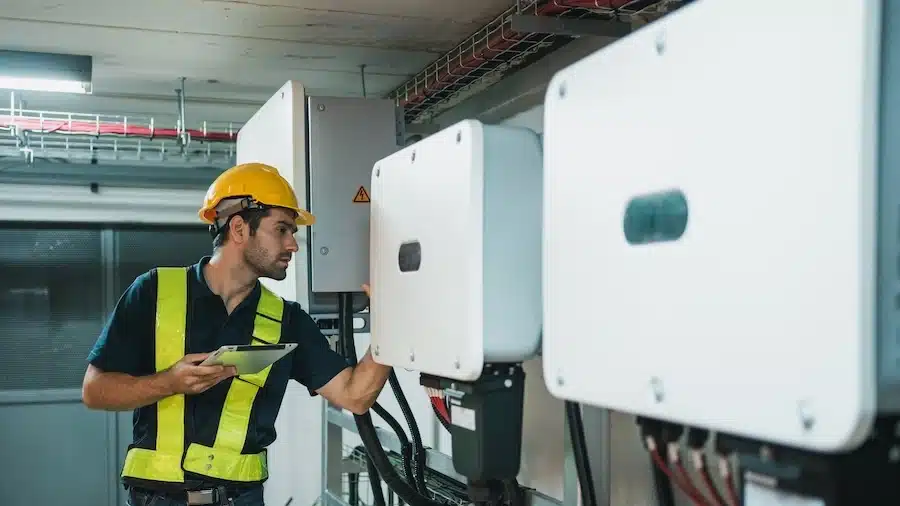GrantTree technical consultant and materials science expert Dr Barbara Souza spotlights UK innovators that are pushing the boundaries of nanotechnology.
Having worked in nanotechnology for the better part of a decade, I’ve seen first-hand how this technically tantalising word can evoke a range of interesting notions.
For some, it conjures images of groundbreaking, nanoscopic structures like the components of microtubules. For others, it summons dystopian visions of rogue nanites, disassembling entire cities like locusts devouring a field of crops.
I understand how technologies acting at imperceptible scales can cause anxiety. But rest assured that nanotechnologists are nowhere close to unleashing a plague of omnivorous, out-of-control robots.
The truth is that extremely exciting work is happening in this space, much of it in the UK. In my opinion, the innovations British companies will give rise to over the next few years could have a dramatic impact on humanity’s struggles with big-picture problems like disease and climate change. And on a range of other intriguing areas like consumer electronics and electric vehicles.
To give you a flavour of the fascinating work happening right now, I wanted to spotlight six UK companies doing big things in the world of nanotechnology.
Each business is an excellent example of the weird and wonderful science that, one day soon, will change our lives for the better.
Oxford NanoPore Technologies
Oxfordshire-based Oxford NanoPore Technologies recently announced it was seeking £300 million in additional funding to further its work on real-time DNA analysis. This would bump the company’s valuation up to £2.4 billion, making it one of the most successful deeptech startups in UK history.
The company’s core product uses protein nanopores – holes so small they can only be entered by single molecules – to sequence strands of RNA and DNA. The process enables “direct, real-time analysis”, helps scientists and clinicians study the genomes of “people, plants, animals, pathogens and environments”.
Oxford NanoPore’s technology has been used to great effect during the COVID-19 pandemic. In my home country of Brazil, researchers used the company’s portable solutions to sequence the genome of SARS-CoV-2 in just 48 hours. In other countries, this process took more than two weeks.
Brazil’s scientists continued to leverage NanoPores’ tech to understand the evolution and epidemic spread of SARS-CoV-2, gravely concluding that the sanitary interventions in effect during the height of the pandemic “remained insufficient to keep virus transmission under control in Brazil.”
OxSonics
OxSonics’ SonoTran technology improves the delivery of anti-cancer agents into tumours.
SonoTran works by creating nanobubbles – pockets of gas two hundred times thinner than a human hair. Once inside the body, the nanobubbles are exposed to high-frequency sound waves, causing them to oscillate. This oscillation creates pressure which propels chemicals inside the bubbles into the surrounding tumour.
OxSonic’s system may sound like an elaborate way to deliver drugs, but that’s because it’s designed to overcome one of the major limitations to the effectiveness of anti-cancer agents: absorption. Solid tumours are dense. So dense, in fact, they only absorb around 1% of anti-cancer agents injected into a patient’s bloodstream.
By increasing the absorption rate, OxSonic’s SonoTran platform increases the efficacy of anti-cancer agents while reducing their toxicity to the patient.
MOF Technologies
Metal-Organic Frameworks – or ‘MOFs’ – are a branch of highly absorbent material with a wide range of exciting applications, from mopping up hazardous chemicals to storing hydrogen fuel.
It’s no exaggeration to say that MOFs – funny though they sound – could be one of the most disruptive technologies of the 21st century.
I’ll admit some bias here: my doctoral thesis looked at utilising MOFs for targeted drug delivery and smart medical dressings development. But you don’t just have to take my word for it. In 2019, the International Union of Pure and Applied Chemistry named MOFs one of the 10 chemistry innovations that will change the world.
The main limitation of MOFs is that they are extremely difficult to make in large quantities. One of the most traditional methods, solvothermal synthesis – a fancy way of saying ‘made using heat and solvents’ – is prohibitively resource-intensive. So it’s unlikely to hold the keys to widespread adoption, especially considering the adverse impact it could have on the environment.
Enter MOF Technologies, a Belfast-based startup aiming to produce MOFs at ‘ton’ scale. The company uses a solvent-free, mechanochemical process to create 17 kinds of MOF in a safe, cost-effective way that is also far more eco-friendly.
The key to MOF Technologies’ process is that the heat required in the chemical reaction is created by mechanical forces, not hot solvent. The intensity of these forces accelerates the whole procedure, resulting in much shorter production times.
FabricNano
London-based FabricNano wants to replace all fermented and petrochemical products – like those used in clothing, packaging and digital devices – with greener, biomanufactured alternatives.
To do this, the company has developed the FabricFlow reactor, a system that uses engineered enzymes to produce biochemicals on top of a kind of DNA wafer.
Whereas traditional biomanufacturing hijacks the protein-making machinery of living cells and microbes to make chemicals, FabricNano’s process is completely cell-free. Instead, it uses microscopic DNA structures to house immobilised enzymes.
This method is imminently scalable, far more precise, and yields a range of other efficiencies that FabricNano hopes will increase the adoption of more environmentally-friendly substitutes.
P2i
Abington-based P2i has created a nanocoating – an ultra-thin sheath of engineered material – that makes phones, wearables and laptops waterproof.
P2i’s ‘Splash-Proof’ nanocoating, which acts much like the waxy cuticle found on leaves, can be applied to an entire device without affecting its look, feel or performance. The coating is also hydrophobic, meaning it guards against water and oleophobic, meaning it repels grease and other oils.
Since its launch in 2004, P2i has worked with a range of leading original equipment manufacturers (OEMs), helping them to protect more than 500 million devices from everyday spills and corrosion.
Anaphite
Lithium-Ion batteries will play a crucial role in our attempts to slow climate change by allowing us to electrify high polluting forms of transportation.
But as any electric car owner will attest, Li-Ion technology has some fundamental limitations, namely cost, capacity, and charging time. Indeed, the fear of needing to make a lengthy, mid-trip stop at an inconvenient charging point has given rise to a whole new kind of stress: so-called ‘range anxiety’.
Graphene-based nanocomposites – electrically conductive materials made from atom-thick sheets of carbon – could help us here. Partially or entirely replacing the materials in anodes and cathodes with purposely configured nanocomposites has been shown to significantly reduce charging times. But, once again, we haven’t yet found a way to do this in a commercially feasible way.
Anaphite, a Bristol-based startup that recently closed a £1.2 million funding round, is looking to change this. It has developed an inexpensive and scalable process for integrating nanocomposites into existing battery materials.
Understandably, Anaphite hasn’t shared much information about how this process works. Still, the company has confirmed that its method decreases the cost and charging time of Li-Ion batteries, which it hopes will accelerate the adoption of electric vehicles in the not too distant future.




